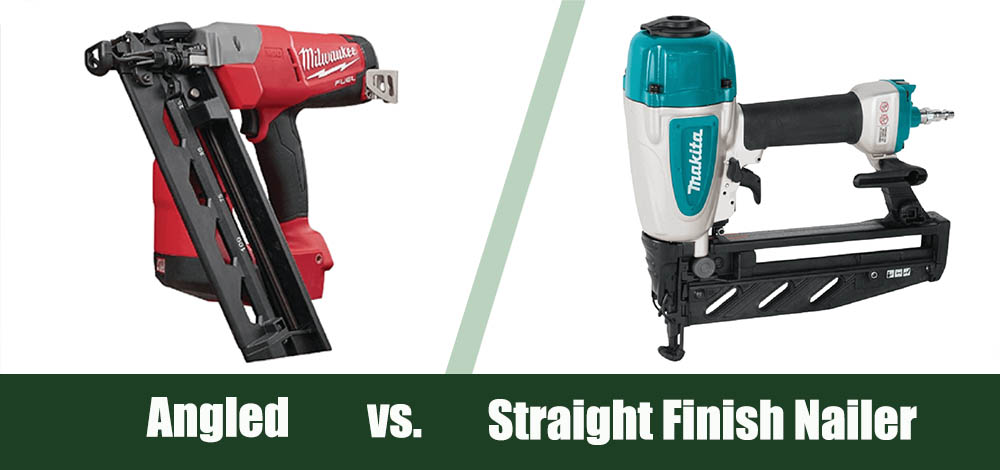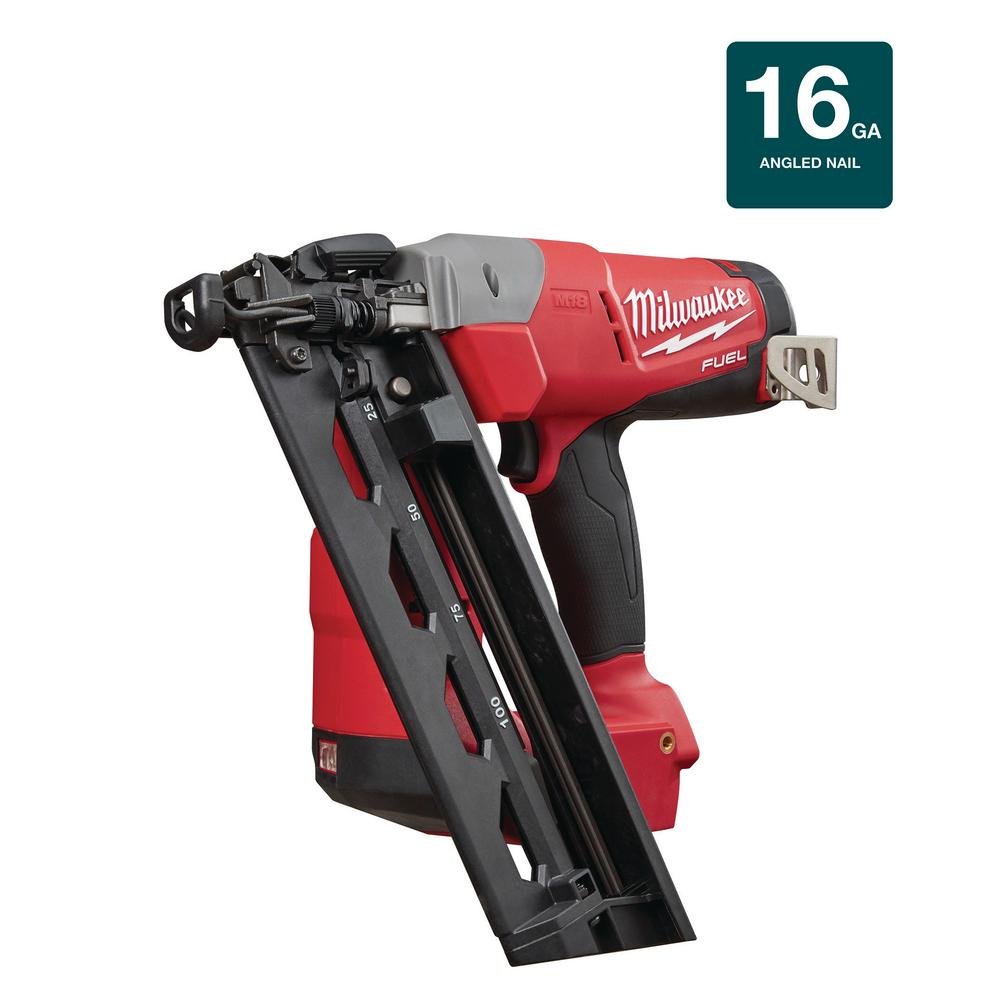Angled vs Straight Finish Nailers: Which is Best for Your Needs?
-
Pete Ortiz
- Last updated:

When you’re involved in a DIY home construction or improvement project (or even types of repair work), it helps to have a powered nailer. Electric nail guns are a lot safer and easier to use than hammering in nails by hand. They also offer much greater precision.
But nailers come in two major types: angled and straight. Angled nailers feature an “angled” magazine near the front of the nail gun, which allows you to use the gun at (obviously) an angle! Meanwhile, straight nailers have straight magazines. The difference seems pretty straightforward, but it can eventually lead to major differences in functionality and suitability for your project.
Let’s break down the differences between angled and straight finish nailers, so you know which one you should buy for your project or worksite.
Angled Finish Nailers Overview
As mentioned, angled nailers feature magazines at a slight angle; this can sometimes be modified depending on the exact nailer in question. The magazine goes back toward your arm, which allows you to drive nails into corners.
Shape and Fit
An angled nailer’s shape comes in handy when you need to install crown molding boards or place nails in any corner location. You can fit into tight spaces without running the nailer’s handle into a wall.
Nail Capacity
Nailers have various nail capacities and suitable gauges. In a nutshell, a gun’s gauge capacity describes the size of nails it can use. Larger gauges translate to thinner nails. For instance, an 18-gauge nail is thinner than a 15-gauge nail.
Angled finish nailers can usually hold larger nails thanks to the longer size of their magazines. They can often go as low as 15-gauge nails, enabling them to work well for heavier construction work. These tools are a great fit for cabinet or other furniture creation or repair. This is also important since thicker nails often work better to hold corner pieces together.
However, this means that the nails installed by this nail gun are a little more visible.
Weight/Portability
Angled nailers are usually made with less material and are also lighter in overall weight. However, this may not always be true if the magazine for a nailer is full (thicker nails weigh more). In general, angled nailers are more portable and easier to store.
Cost
Angled nailers have a downside in that they tend to be more expensive than straight-finish nailers. This is for both the overall unit and the nails that go into the gun. Thicker nails are usually more expensive.
- More adaptable to different spaces
- Can be used in cramped environments
- Works well for corner nailing
- Lighter and more portable
- A little pricier overall
Straight Finish Nailer Overview
A straight-finish nailer can also be an effective tool. Its magazine runs the length of the handle at a right angle relative to the barrel. This gives the nail gun a more boxy shape compared to its angled counterpart.
Shape and Fit
The straight nailer’s shape means that you can’t easily fit it into any cramped corners or tight spaces, at least compared to an angled nailer. This limits its use somewhat (since angled nailers can still be used for regular spaces as well).
Nail Capacity
In contrast to an angled nailer, a straight nailer uses thinner nails, and most straight nailer magazines can’t accept nails lower than 16 gauge. This makes them only suitable for working with thin boards or other materials and light construction work. Picture frame installation or panel installation are great uses for the straight nailer.
On the positive side, a straight nailer’s nail heads will be less visible and better for placing the finishing touches on a visible space.
Weight/Portability
Straight nailers are usually heavier and more difficult to transport than angled nail guns. This may not be a deal breaker, depending on how you plan to use the finish nailer, but it’s something to keep in mind.
Cost
One area where straight nailers exceed their angled counterparts is in price. They’re typically much more affordable since they provide less power (since they use thinner nails) and use cheaper nails.
- Great for finishing work
- Good for lighter nailing
- More affordable
- Nails aren’t as visible
- Not good for tight spots
- Can’t do corners as well
When to Use an Angled Finish Nailer
An angled finish nailer is best used for the following circumstances:
- Corner spots
- Cramped locations
- Thicker boards that require larger nails
- Furniture making/repair
- Portable nailing (i.e., contractor work)
When to Use a Straight Finish Nailer
Meanwhile, a straight-finish nailer is best used for these jobs:
- General home repair
- Nailing for thin boards
- Larger spaces/boards with lots of small nails
- Ideal for budget-minded shoppers
Conclusion
Ultimately, both finish nailers can be excellent tools for your home DIY or repair project. If you have the cash, you can get one of each. Otherwise, go with the nailer that will work best for your immediate needs.
Related Reads:
- WORX GT2 VS WORX GT3 – WHICH ONE’S BEST?
- CORDLESS VS CORDED DREMEL: WHICH IS BEST FOR YOU?
- PIN NAILER VS BRAD NAILER: WHICH IS BEST FOR YOUR NEEDS?
Contents






